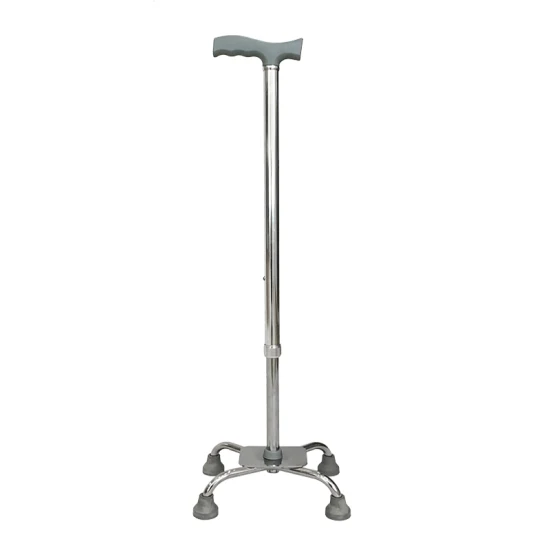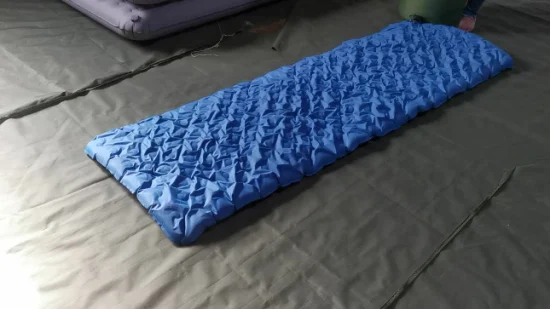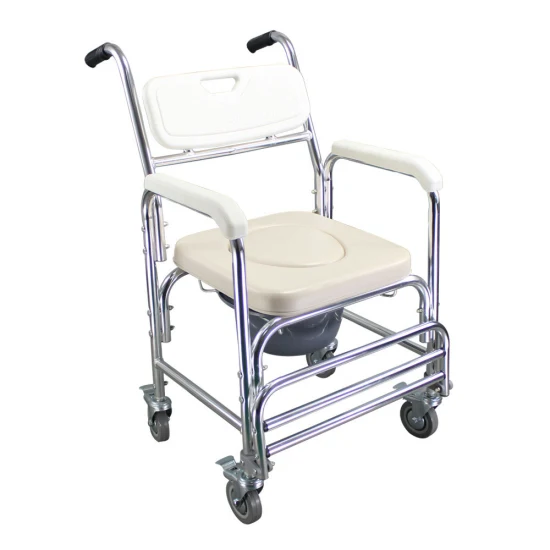FY 2024 Hospital Inpatient Prospective Payment System (IPPS) and Long
Share
On August 1, 2023, the Centers for Medicare & Medicaid Services (CMS) issued the fiscal year (FY) 2024 Medicare hospital inpatient prospective payment system (IPPS) and long-term care hospital prospective payment system (LTCH PPS) final rule.
The final rule updates Medicare fee-for-service payment rates and policies for inpatient hospitals and LTCHs for FY 2024. CMS is publishing this final rule to meet the legal requirements to update Medicare payment policies for IPPS hospitals and LTCHs on an annual basis. In this final rule, CMS is also finalizing policies to promote health equity and patient safety. This rule also finalizes the proposals presented in CMS-1788-P, which address the treatment of Section 1115 demonstration days in the calculation of Medicare disproportionate share hospital (DSH) payments. This fact sheet discusses major provisions of the final rule, which can be downloaded from the Federal Register at: https://www.federalregister.gov/public-inspection/2023-16252/medicare-program-hospital-inpatient-prospective-payment-systems-for-acute-care-hospitals-and-the
CMS pays acute care hospitals (with a few exceptions specified in the law) for inpatient stays under the IPPS. LTCHs are paid under the LTCH PPS. Under these two payment systems, CMS sets base payment rates prospectively for inpatient stays generally based on the patient’s diagnosis, the services or treatment provided, and the severity of illness. Subject to certain adjustments, a hospital receives a single payment for each case depending on the payment classification assigned at discharge. The classification systems are: IPPS: Medicare Severity Diagnosis-Related Groups (MS-DRGs) and LTCH PPS: Medicare Severity Long-Term Care Diagnosis-Related Groups (MS-LTC-DRGs).
The law requires CMS to update payment rates for IPPS hospitals annually and to account for changes in the prices of goods and services used by these hospitals in treating Medicare patients, as well as for other factors. The index used to do this is known as the IPPS Hospital Market Basket. The IPPS pays hospitals for services provided to Medicare beneficiaries using a national base payment rate, adjusted for a number of factors that affect hospitals’ costs, including the patient’s condition and the cost of hospital labor in the hospital’s geographic area. CMS updates LTCHs’ payment rates annually according to a separate market basket based on LTCH-specific goods and services.
The increase in operating payment rates for general acute care hospitals that are paid under the IPPS, successfully participate in the Hospital Inpatient Quality Reporting (IQR) program and are meaningful electronic health record (EHR) users is 3.1%. This reflects a projected FY 2024 IPPS hospital market basket update of 3.3%, reduced by a statutorily required 0.2 percentage point productivity adjustment. The update reflects the most recently available forecasts of the price proxies underlying the market basket, including projected increases in compensation.
Hospitals may be subject to other payment adjustments under the IPPS, including:
The increase in operating and capital IPPS payment rates will generally increase hospital payments in FY 2024 by $2.2 billion. In addition, CMS projects Medicare disproportionate share hospital (DSH) payments and Medicare uncompensated care payments combined will decrease in FY 2024 by approximately $957 million. This change reflects the CMS Office of the Actuary’s use of updated estimates and data in its projections. CMS also estimates that additional payments for inpatient cases involving new medical technologies will decrease by $364 million in FY 2024, primarily driven by the expiration of new technology add-on payments for several technologies.
For FY 2024, CMS expects the LTCH standard payment rate to increase by 3.3% and LTCH PPS payments for discharges paid the LTCH standard payment rate to increase by approximately 0.2%, or $6 million, due primarily to a projected 2.9% decrease in high-cost outlier payments as a percentage of total LTCH PPS standard federal payment rate payments. After consideration of public comments, CMS made modifications to the methodology used to determine the LTCH PPS high-cost outlier threshold for discharges paid the LTCH standard federal payment rate and finalized a threshold that is notably lower than in the proposed rule.
CMS will continue temporary policies finalized in the FY 2020 IPPS/LTCH PPS final rule to address wage index disparities affecting low-wage index hospitals, which includes many rural hospitals. At this time, we only have one year of relevant data (from FY 2020) that we could use to evaluate any potential impacts of this policy. As CMS does not have sufficient data from the time period this policy has been in effect, we believe it is appropriate to continue the policy while we obtain and review additional data.
This rule also includes changes to GME payments for training in the new Medicare provider type, the rural emergency hospital (REH), which was established by the Consolidated Appropriations Act, 2021, to address the growing concern over closures of rural hospitals. These changes help support graduate medical training in rural areas by allowing these rural hospitals to serve as training sites for Medicare GME payment purposes after they become REHs.
The rule also advances one of the goals of the CMS Framework for Health Equity 2022-2032 – to more explicitly measure the impact of our policies on health equity. As part of our growing capabilities in this area, we are adding 15 new health equity hospital categorizations for the FY 2024 IPPS payment impacts. Moving forward, one of the priorities of the CMS Framework for Health Equity 2022-2032 is to expand the collection, reporting, and analysis of standardized health equity data. As additional data become available, we plan to incorporate it on an ongoing basis into our impact analyses.
IPPS payment is made based on the use of hospital resources in the treatment of a patient’s severity of illness, complexity of service, and/or consumption of resources. Generally, a higher severity level designation of a diagnosis code results in a higher payment to reflect the increased hospital resource use. After review of our data analysis of the impact on resource use generated using claims data, CMS finalized a change to the severity designation of the three ICD-10-CM diagnosis codes describing homelessness (e.g., unspecified, sheltered, and unsheltered) from non-complication or comorbidity (NonCC) to complication or comorbidity (CC), based on the higher average resource costs of cases with these diagnosis codes compared to similar cases without these codes. This action is also consistent with the Administration’s goal of advancing health equity for all, including members of historically underserved and under-resourced communities, as described in the President’s January 20, 2021, Executive Order 13985 on “Advancing Racial Equity and Support for Underserved Communities Through the Federal Government.” As SDOH diagnosis codes are increasingly added to billed claims, CMS plans to continue to analyze the effects of SDOH on severity of illness, complexity of services, and consumption of resources.
In response to the COVID-19 Public Health Emergency (PHE), CMS established the New COVID-19 Treatments Add-on Payment (NCTAP) for eligible discharges during the PHE. In the FY 2022 IPPS/LTCH PPS final rule, we finalized a change to our policy to extend NCTAP through the end of the fiscal year in which the PHE ends, for all eligible products, to continue to mitigate potential financial disincentives for hospitals to provide these new treatments, and to minimize any potential payment disruption immediately following the end of the PHE. As the PHE ended on May 11, 2023, discharges involving eligible products will continue to be eligible for the NCTAP through September 30, 2023 (that is, through the end of FY 2023). The NCTAP will expire at the end of FY 2023, and no NCTAP will be made beginning in FY 2024 (that is, for discharges on or after October 1, 2023).
To increase transparency and improve the efficiency of the NTAP program and application process, CMS is finalizing its proposal to 1) require NTAP applicants for technologies that are not already FDA market authorized to have a complete and active FDA market authorization application request at the time of NTAP application submission, and 2) to move the FDA approval deadline from July 1 to May 1, beginning with applications for FY 2025. CMS believes these policy changes will improve the completeness of submitted NTAP applications, improve CMS’s ability to provide a fuller analysis to identify eligibility concerns and allow the public the opportunity to more knowledgeably analyze applications and supporting data to provide public comment.
CMS has taken into consideration recent public comments that have urged it to change its wage index policies involving the treatment of hospitals that have reclassified from urban to rural under section 1886(d)(8)(E) of the Social Security Act (implemented in the regulations at §412.103). CMS is finalizing the proposal to interpret section 1886(d)(8)(E) of the Social Security Act as treating rural reclassified hospitals the same as geographically rural hospitals for purposes of calculating the wage index. Specifically, we will include hospitals with §412.103 reclassification along with geographically rural hospitals in rural wage index calculations beginning with FY 2024. Under Section 4410(a) of the Balanced Budget Act of 1997 (Pub. L. 105–33), the area wage index applicable for any hospital that is located in an urban area of a state may not be less than the area wage index applicable to hospitals located in rural areas in that state. This provision is referred to as the rural floor. We will include the data of all §412.103 reclassified hospitals in the calculation of the wage index for the rural area of the state and the calculation of the rural floor for urban hospitals in the state.
CMS is finalizing the changes to the regulations governing the counting of days associated with individuals eligible for certain benefits provided by section 1115 demonstrations in the Medicaid fraction. Under this finalized policy, only the days of those patients who receive from the demonstration (1) health insurance that covers inpatient hospital services or (2) premium assistance that covers 100% of the premium cost to the patient, which the patient uses to buy health insurance that covers inpatient hospital services, are to be included, provided in either case that the patient is not also entitled to Medicare Part A. In addition, days of patients for which hospitals are paid from demonstration-authorized uncompensated/undercompensated care pools may not be included. These changes were proposed for FY 2024 in a separate proposed rule issued in February 2023 (CMS 1788-P).
For a hospital to submit claims and receive Medicare payment for services referred by a physician owner or investor (or a physician whose family member is an owner or investor), the hospital must satisfy all of the requirements of either the whole hospital exception or the rural provider exception to the physician self-referral law, commonly referred to as the “Stark Law.”
To use the rural provider exception or the whole hospital exception, a hospital may not increase the aggregate number of operating rooms, procedure rooms, and beds above that for which the hospital was licensed on March 23, 2010 (or, in the case of a hospital that did not have a provider agreement in effect as of March 23, 2010, but did have a provider agreement in effect on December 31, 2010, the effective date of such agreement), unless CMS has granted an exception to the prohibition on expansion. A hospital may request an exception to the prohibition on expansion of facility capacity using the process established in the calendar year (CY) 2012 hospital outpatient prospective payment system (OPPS) and ambulatory surgical center (ASC) payment system final rule.
In the FY 2024 IPPS/LTCH PPS final rule, CMS is:
The Hospital IQR Program is a pay-for-reporting quality program that reduces payment to hospitals that fail to meet program requirements. Hospitals that fail to submit quality data or to meet all Hospital IQR Program requirements are subject to a one-fourth reduction in their Annual Payment Update under the IPPS.
In the FY 2024 IPPS/LTCH PPS final rule, CMS is finalizing the adoption of three new measures, the removal of three existing measures, and the modification of three current measures. CMS is also finalizing two changes to current policies related to data submission, reporting, and validation.
Specifically, CMS is adding three new electronic clinical quality measures (eCQMs) to the inventory of eCQMs from which hospitals can select to meet the eCQM reporting requirements for a given year for both the Hospital IQR and Medicare Promoting Interoperability Programs:
CMS believes the adoption of the Hospital Harm-AKI and Hospital Harm-PI eCQMs will support CMS’ goal of advancing health equity. AKI is more common in Black hospitalized patients than non-Black patients. Research has shown a higher prevalence of pressure injuries in patients with darker skin tones and that patients with darker skin tones are at higher risk of developing higher-stage pressure injuries. This research suggests that current skin assessment protocols could be less effective at assessing lower-stage pressure injuries for people with darker skin tones. By adding these measures to the Hospital IQR Program, hospitals will be better able to implement appropriate quality improvement to reduce them.
CMS is finalizing modifications to three current measures:
CMS is finalizing removal of three measures:
CMS is finalizing updates to the data submission and reporting requirements for the Hospital Consumer Assessment of Healthcare Providers and Systems (HCAHPS) survey measure beginning with the CY 2025 reporting period/FY 2027 payment determination. These updates include three new web-first modes of survey implementation, removal of the survey’s prohibition on proxy respondents, extension of the data collection period from 42 to 49 days, limiting the number of supplemental survey items to 12, requiring the official Spanish translation for Spanish language-preferring patients, and removing two administration methods that are not used by participating hospitals. In a 2021 mode experiment, these changes, which are also being made in the Hospital VBP and PCHQR Programs, resulted in higher response rates and better representation of younger, Spanish language-preferring, racial and ethnic minority, and maternity care patients.
In addition, CMS received feedback from stakeholders on the potential future inclusion of two geriatric measures: the Geriatric Hospital and Geriatric Surgical structural measures, and on the establishment of a publicly reported hospital designation to capture the quality and safety of patient-centered geriatric care.
In 2011, CMS established the Medicare and Medicaid EHR Incentive Programs (now known as the Medicare Promoting Interoperability Program) to encourage eligible professionals, eligible hospitals, and critical access hospitals (CAHs) to adopt, implement, upgrade, and demonstrate meaningful use of certified electronic health record (EHR) technology (CEHRT).
CMS is finalizing the following changes to the Medicare Promoting Interoperability Program for eligible hospitals and CAHs:
PPS-Exempt Cancer Hospital Quality Reporting (PCHQR) Program
The PCHQR Program is a quality reporting program for the eleven cancer hospitals that are statutorily exempt from the IPPS. CMS collects and publishes data from PCHs on applicable quality measures. In the FY 2024 IPPS/LTCH PPS final rule, CMS is finalizing the following:
The Hospital Readmissions Reduction Program is a value-based purchasing program that reduces payments to hospitals with excess readmissions. It also supports CMS’ goal of improving health care for patients by linking payment to the quality of hospital care. CMS did not propose or finalize any changes to the Hospital Readmissions Reduction Program. We note that all previously finalized policies under this program will continue to apply and refer readers to the FY 2023 IPPS/LTCH PPS final rule (87 FR 49081 through 49094) for information on these policies.
Hospital-Acquired Condition (HAC) Reduction Program
The HAC Reduction Program creates an incentive for hospitals to reduce the incidence of hospital-acquired conditions by reducing Medicare fee-for-service (FFS) payment by 1% for applicable hospitals that rank in the worst performing quartile on the measures of hospital-acquired conditions. In the FY 2024 IPPS/LTCH PPS final rule, CMS is finalizing the following proposals to:
In addition, CMS provided a summary of the comments received on our request for feedback on potential future measures and program modifications that would advance patient safety and reduce health disparities.
Hospital Value-Based Purchasing (VBP) Program
The Hospital VBP Program is a budget-neutral program funded by reducing participating hospitals’ base operating DRG payments each fiscal year by 2% and redistributing the entire amount back to the hospitals as value-based incentive payments. In the FY 2024 IPPS/LTCH PPS final rule, CMS is finalizing the proposals to:
The LTCH QRP is a pay-for-reporting program. LTCHs that do not meet reporting requirements are subject to a two-percentage-point reduction in their Annual Increase Factor. In the FY 2024 IPPS/LTCH PPS final rule, CMS is finalizing the following proposals:
###
CMS News and Media GroupCatherine Howden, DirectorMedia Inquiries Form202-690-6145
Background on the IPPS and LTCH PPS Changes to Payment Rates under IPPS Changes to Payment Rates under LTCH PPS Continuation of the Low-Wage Hospital PolicyRural Emergency Hospitals (REHs) and Graduate Medical Education (GME) Health Equity ImpactsSocial Determinants of Health Diagnosis (SDOH) CodesChanges to the New COVID-19 Treatments Add-on Payment (NCTAP) Changes to New Technology Add-on Payment (NTAP) Policies for FY 2024Changes to the Rural Wage Index Calculation MethodologyTreatment of Section 1115 Demonstration Days for Purposes of Disproportionate Share Hospital (DSH) PaymentsPhysician-Owned HospitalsHospital Inpatient Quality Reporting (IQR) Program PPS-Exempt Cancer Hospital Quality Reporting (PCHQR) Program Hospital Readmissions Reduction ProgramHospital-Acquired Condition (HAC) Reduction ProgramHospital Value-Based Purchasing (VBP) Program adoption of the COVID-19 Vaccine: Percent of Patients/Residents Who Are Up to Date (Patient/Resident level COVID-19 Vaccine) measurenew the Functional Discharge (DC Function) measure the COVID-19 Vaccination Coverage among HCP measureApplication of Percent of Long-Term Care Hospital (LTCH) Patients with an Admission and Discharge Functional Assessment and a Care Plan That Addresses Function (Application of Functional Assessment/Care Plan) measurePercent of Long-Term Care Hospital (LTCH) Patients with an Admission and Discharge Functional Assessment and a Care Plan that Addresses Function (Functional Assessment/Care Plan) measure. Transfer of Health Information to the Provider Transfer of Health Information to the PatientYou may also like
![Adjustable Aluminum Alloy Steelfour Leg and Antiskid Stable Retractable Walking Aid Crutches]()
Adjustable Aluminum Alloy Steelfour Leg and Antiskid Stable Retractable Walking Aid Crutches
Overview Product Description Hanqi HQ324 High Quality Quad Walking Cane for Elderly About this item Product Details Detailed Photos
![Physical Therapy Medical Adjustable Orthopedic Sprained Foot Stabilizer Air Cam Walker Brace Walking Ankle Fracture Boot]()
Physical Therapy Medical Adjustable Orthopedic Sprained Foot Stabilizer Air Cam Walker Brace Walking Ankle Fracture Boot
Product Description DetaDetiled Photo Company Profile 1. What is your MOQ? Usually,the MOQ will be 100pcs. We can have further discussion for the quantity. 2. What is your shipping way? By sea , by
![Camping Ultralight Inflatable Air Mattress for Tent and Sleeping Bag]()
Camping Ultralight Inflatable Air Mattress for Tent and Sleeping Bag
Camping Ultralight Inflatable Air Mattress for tent and sleeping bag 1.Are you a factory? ---Yes, we are professional manufacturer and welcome to visit us. 2..Can we distribute your product? ---Yes,
![Elderly Anti]()
Elderly Anti
Overview Powder Coating Surface Steel Shower Seat Over Toilet Chair Height Adjust Lightweight Steel Commode Chair Product Description Commode Chair aluminuml Frame Foldable Height Adjustable Toilet





